Where am I : India Tour Packages » Most Popular Packages » Aurangabad Tour Packages
View Details
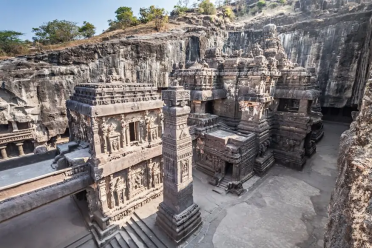
Destinations Covered : Mumbai » Shirdi » Aurangabad
View Details
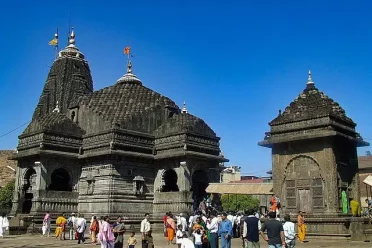
Destinations Covered : Mumbai » Nashik » Shirdi » Aurangabad » Parli Vaijnath » Ahmednagar »
View Details
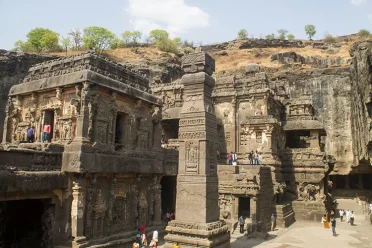
Destinations Covered : Mumbai » Aurangabad » Goa
View Details
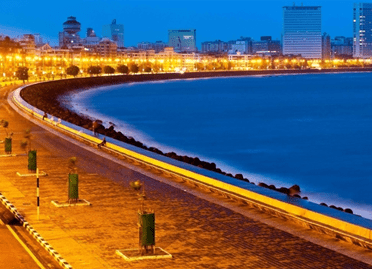
Destinations Covered : Delhi » Agra » Jaipur » Mumbai » Aurangabad » Mumbai
View Details
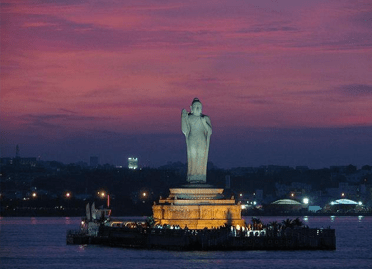
Destinations Covered : Mumbai » Aurangabad » Hyderabad » Nagarjunakonda » Vijayawada » Amravati » Rajahmundry » Visakhapatnam
Aurangabad Tour Packages
India is a repository of secret cave temples. Ajanta and Ellora are especially striking in their beauty of the many others. The city of Aurangabad is located in western India. Tourists often visit in Aurangabad on the way to the famous sights included in the UNESCO World Heritage List: the cave complex of monasteries and temples of Ajanta and the village with cave temples of the VI-IX centuries Ajanta. However, in the same city, there is also something to see.
It would help if you visited the mausoleum of the wife of the Padishah of the Mughal Empire, Aurangzeb Bibi-Ka-Makbara, Buddhist cave temples in the university area and northwest of the city, and eight gates built by the Mughals that have survived to this day. Near the largest and oldest of these gates is the Nauhanda Palace. One of the city's attractions is the Panchakki water mills and the Sufi mausoleum. You can also visit the city of Daulatabad, located near Aurangabad.
Places to visit in Aurangabad
Aurangabad, one of the fastest-growing cities in Asia, is the tourism capital of the Indian state of Maharashtra. The picturesque medieval city of Aurangabad offers a fascinating glimpse into a glorious past through a rich array of diverse historical sights along with a present enhanced by a natural, cultural heritage. Visiting Aurangabad from Mumbai or Pune can be the perfect day trip, and here are some of the must-see experiences in the city.
Aurangabad district of Bihar is home to many tourist attractions and temples, historical monuments, and pilgrimage centers. The city is known for its rich historical importance and is one of the hidden gems of North India for tourism. Let us look at the best places to visit in Aurangabad.
Devgiri Fort
Fort Devgiri is located in the town of Daulat. The massive fort immediately draws you in and leaves you spellbound as you look at it. The fort was considered built by Billamraja, who ruled Daulatabad in 1187 AD. The architectural marvel was built to provide the best defense for the rulers, and it was very well done as the fort was never won.
Pawai Forts, Mali and Chandangarh
These places are home to the migrants from Rajasthan who settled here during medieval times. The culture of the community is still alive, as the forts from that time are here in perfect condition. Many archaeologists and historians have written about these forts as reminiscences of a bygone age. A must-see for any history buff, Pawai, Mali, and Chandangarh Forts are a beautiful sight to behold while in the city.
Ajanta cave and temples of Aurangabad
Not far from the village of Ajanta in India, there is a magnificent temple complex carved into a cliff on the south bank of the small river Vagura. About thirty caves were carved into the rock more than a thousand years ago; they are located in two tiers at ten to thirty-five meters. Cave temples are unique monuments of Indian architecture, sculpture, and painting.
Each temple is a majestic square hall adorned with two rows of columns richly covered with decorative carvings. The carving also decorates the passages leading to the temples. Several small monastic cells adjoin the main hall of each temple.
The main treasure of the cave temples of Ajanta is the wall paintings preserved in thirteen out of thirty temples. They depict Buddhist legends, everyday scenes, and accurate and mythological animals. Some images are erotic. The scale of the work is striking - skillful painting covers the walls, columns, and ceilings of temples.
Ghrishneshwar Temple
Ghrishneshwar Temple belongs to the 18th century. The incredible architecture is impressive, although you can't expect to see the complete ancient architecture here due to the damage caused by Aurangzeb. It is a quiet place frequented by tourists, as it is one of the twelve Siva temples.
Ellora Caves
Ellora Caves shed light on the tolerance of the people of ancient India, who were willing to adapt to other beliefs and religions. The Ellora caves are spaced over 2 kilometers apart, and there are 34 caves representing three religions, namely Buddhism, Hinduism, and Jainism. All the 34 temples and monasteries were carved side by side into the walls of a cliff. Artisans' architectural expertise and building buildings with rocks cannot be admired enough.
Khuldabad
For Muslims, it is a holy shrine. The city walls built by Aurangzeb were in ruins, and ruins of ancient buildings could be seen. The Tombs of Aurangzeb, Lal Bagh of Khan Jahan, and several other Tombs are located here.
Kailasanatha
The grandeur of the temple and its rich decoration are extraordinary. Its height is approximately 30 meters, and the area is almost twice the size of the ancient Greek Parthenon temple in Athens. The construction of the temple took 150 years and required about 7,000 workers.
The temple's uniqueness lies in its carved from a monolithic stone, including all the statues and figures, and the columns there. The temple was built not in the traditional way from the bottom up but from the top down, which made it possible to preserve the integrity of the stone massif. The number of figures and statues decorating the temple is incalculable, and their size is many times greater than human height. In the middle of the central hall rises a stone lingam, a symbol of the male principle. Erotica is the central theme of the temple, as the beginning of life.
The Kailasanatha temple is the central part of the entire architectural exposition and is separated from the rest of the buildings by three notches, each 30 meters deep. It is located in 16 of the 34 caves of the city of Ellora.
The temple reached us almost in its original form and did not suffer from time. It is an incredibly majestic building, worthy of attention from the highest persons. Today, the temple is recognized as an architectural monument and is included on the World Heritage List.
Bibi Ka Makbara
Bibi Ka Makbara is the beautiful mausoleum of Dilras Banu Begum, commissioned by her husband, the Mughal Emperor Aurangzeb, in 1660. The mausoleum was built in the characteristic Mughal style, with the building standing tall in the middle of a Persian-style garden called Charbagh. The monument has four minarets, an onion dome, and white marble lattices. Its obvious resemblance to the Taj Mahal, possibly the best example of Mughal architecture, has earned the nickname Taj Dakkhani or Taj of the Deccan. The Bibi Ka Makbara was designed by Ustad Ata-Ullah, son of the chief designer of the Taj Mahal.
Deo Kund
Famous as an important historical place, Deo Kund has located 10 km. It is dedicated to Lord Shiva and is popular with tourists during the Shivaratri festival. Legend says that Chyawan Rishi, a famous fellow, took refuge here in this temple, making it a pious and holy place for people to visit.
Bani Begam Bagh
The beautiful garden was created by Aurangzeb’s grandson in memory of Bani Begum, his wife. The lush greenery and landscaping help you experience inner peace. This reflects the style of Mughal architecture. You will find a waterfall near the garden. There is not much activity for you here except to relax and enjoy.
Ghrishneshwar Temple
Ghrishneshwar Temple belongs to the 18th century. The incredible architecture is impressive, although you can't expect to see the complete ancient architecture here due to the damage caused by Aurangzeb. It is a quiet place frequented by tourists, as it is one of the twelve Siva temples.
Jamb Samartha, Ghansavangi
The main attraction here is Samaria Temple, the built-in memory of Saint Ramdas, Suryajipant Tosar Kulkarni, and Ranubai. Many believe that his birth time coincides precisely with Rama's birth. In fact, in the world, his name was Narayan. Today, during Ram Navami, the Rama Temple, located in the home of St. Ramdas Swami, hosts a famous annual fair. This temple was built with donations from Queen Mother Holkar of Indore in the memory and honor of Shri Devi Ahila Bai Holkar. If you fully immerse yourself in this exciting spiritual place, you can linger here.
It is believed that Saint Ramdas Swami was born in Jamb Samartha, located in the Ghansavangi tahsil of the Jalna district.
Piru and Siris
Piru is connected with the poet Ban Bhatt from the court of Harsh Vardhan. Known to be important in the area's history, the place was previously known as Pritikoota. Being so important in history, this place is a must-see for anyone looking for an experience that gives them a glimpse into the real world of the princely state. Siris is a pargana in the Mughal period, an important area where the 1857 revolt occurred.Tourists often come to these places to experience the city in its true essence and learn about the rich Mughal past that the place prides itself on.
It is the place where the Magadha Aurangabad Empire, which previously stood on a piece of land, is a myriad of ancient historical monuments, religious centers, local handicrafts, and markets. A place to visit for anyone looking for an adventure, Aurangabad is genuinely the place to head for a quiet escape from city life!
Panchakki
Visiting this attraction will be disappointing for most tourists, but Panchakki has a long history. On the territory of Panchakki, there are several reservoirs in which flocks of fearless carps live, and next to the enormous banyan tree is the tomb of Baba Shah Muzaffar.
Aurangabad is not rich in insights, and some are very much for an amateur, so those tourists who have little time can safely skip Panchakki and move on. Panchakki is a medieval breakthrough technological project. The ancient Indians made water work for their needs in terms of technology. By the way, in other parts of the world, water was tamed much earlier.
Panchakki, in addition to technology, also has a spiritual aspect. It was a meeting place for Sufi saints who gathered near this place as far back as the 12th century AD.
Tips for tourist
Follow your itinerary and interests.
India is such a country that it is difficult to see it even in a few years. Choose your route, and see much more than the Taj Mahal and Goa. There is no doubt that these are unique places. Still, there are great opportunities to visit tea plantations, learn to print on clothes, wander the desert, or join a yoga/meditation/vipassana program in the mountains. It is unnecessary to go through a marathon of all the attractions mentioned on the Internet. Choose less, explore more. Feel and enjoy the journey!
Water
Due to the complexity of the sanitary and epidemiological situation in the country, special attention should be paid to hygiene. Never drink raw water or brush your teeth with it. Do not use ice sold on the street - it can be made from raw water. Use only mineral water in plastic bottles and wash your hands thoroughly with soap. It is advisable you eat only vegetables that have been heat-treated relatively fearlessly. It is recommended to ensure that the dishes are clean in a restaurant.
Security
A fairly common phenomenon is pickpocketing and theft of luggage. It is better to store your passport, airline tickets, insurance policy, and cash in a hotel safe, taking only the most necessary minimum. Keep a close eye on your luggage during loading and unloading.
Photo and video shooting
In India, it is forbidden to photograph government institutions, airports, bridges, and anything that directly or indirectly indicates belonging to the army and police. At times, the situation was absurd when tourists were detained while photographing the railway station in Mumbai.
Respect for religion and tradition
In the temples you can only be entered with a covered head. A woman can enter a mosque only with a covered head and shoulders and long clothes. No leather goods should be brought into temples. Photographs are allowed only with the permission of the temple minister. You must agree with the administration to shoot in nature reserves and national parks. It is strictly not recommended to photograph representatives of some ethnic groups and castes.
Observe local etiquette
If it seems to you that there are no rules of etiquette in India, it just seems to you. There are stringent rules here, some of which foreigners should follow.
Be respectful of vegetarians. So, if you are such, you will fall in love with India. However, if you are a meat lover, keep in mind that most Indians consider it indecent to eat meat in the same room as vegetarians.
Respect the elderly. In India, the oldest family members are honored and respected. If you visit one of the locals, you must first greet the prominent family - a grandfather or other relative. Even just on the street or in line when meeting an older person, greet him.
Smoking
In India, it is forbidden to smoke in public places: medical institutions, restaurants, eateries, coffee houses and bars, shopping malls, cinemas, nightclubs, libraries, public toilets, stadiums, bus stops, railway stations, and airport lobbies. Hotels with more than 30 rooms must provide guests with a separate smoking area.
Airports in India
Most Indian airports have stringent rules that only passengers can enter the terminal building. Given that inside the terminal, there are ticket offices, banks, representative offices of airlines, and so on, getting inside turns into a complex operation to find the correct official who will allow you to visit the airport. Tourists arriving in India are advised to resolve all issues with currency exchange, baggage and tickets even before leaving the terminal. You will not get back as soon as you step outside the arrivals hall.
Public transport in Aurangabad
According to residents, city buses run regularly in Aurangabad. But in practice, even Sherlock Holmes will not understand their schedule and find their stops.
For most travelers, auto-rickshaws remain the most affordable means of transportation around Aurangabad. The peculiarity of using Aurangabad auto-rickshaws is as follows: most auto-rickshaw drivers speak English very mediocrely or do not speak it, but the desire to earn money is exceptionally high.
Given this fact, try to understand whether the driver has caught the meaning of your message, and always negotiate the cost of the route and the conditions of the trip in advance. If you are going to the caves of Aurangabad, then do not let go of the auto-rickshaw.
Last words
Aurangabad offers you a clear view of the glories of the past and the effects of wars. The cultural heritage and architectural excellence of the early times and centuries-old monuments are something that will remain in your memory forever. You will love the Aurangabad tourist spots for the stunning scenery and display of excellence in various art forms.
If you visit a country or city for the first time, prepare well for the trip. Find out what is worth seeing and what establishments are worth visiting. Use our guide to places of interest to plan visit in Aurangabad. Based on the list of attractions, it is clear that every tourist will be able to choose the most suitable place to Aurangabad.
Speak to our Experts!
Instant Quote, Best Deals - 100% Customizable, Includes hotels + car + guides Cost depends on various factors like, number of people you are, travel dates, category of hotel and transportation etc.Drop your Inquiry to get the best deals as per your requirements. 100% Satisfaction Guaranteed. Rated 5* in TripAdvisor.



